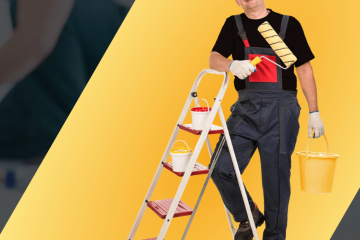Metal The process of glueing or fastening one metal to another is called cladding. Cladding is frequently used to enhance the appearance and weather resistance of structures.
Metal wall cladding’s greatest asset is its longevity. Metal is a sturdy substance that is resistant to abrasion. Additionally, its fire resistance makes it the perfect material for building cladding in regions where wildfires are risky.
Metal Cladding Systems
When a non-structural rain-screen cladding system aims to provide weather protection and an aesthetically pleasing exterior appearance, metal is frequently used because metal panels are bendable and foldable, there are numerous ways to join and affix them to a structure, and the advantages of each method vary based on the intricacy of the construction and the final appearance. The most widely utilised systems are as follows:
Standing Seam
Standing seam cladding is one of the most unique systems, identified by strong folding connections between each panel. It is widespread across typologies because its hidden fastening parts enable simplified architectural exteriors. Numerous metals, such as titanium, zinc, weathering steel, aluminium, galvanised, or stainless steel, can be used with standing seam systems.
Snaplock
With a comparable ribbed design to standing seam, Snaplock is a less complicated option that doesn’t require installing special closing equipment. Snaplock panels “snap” together for a simple and rapid installation.
Interlocking
An interlocking system offers dramatic, expressive joints and a smoother appearance. Interlocking metal cladding panels come in different widths and can be oriented diagonally, vertically, or horizontally.
Cassette
Large metal cladding sections perfectly fit the open-jointed cassette system, which can hold panels up to 13 feet long. The cassettes have a contemporary, flat appearance because they are bent and fastened to an aluminium structure with invisible clips.
Custom
If none of the above options work for your project, a skilled manufacturer can develop a whole new system or adapt an existing one to produce a bespoke one. In this case, customising would significantly increase costs, so the project budget needs to be considered.
Benefits of Metal Cladding
The term “cladding” describes a kind of material that is usually used outside of buildings. Although the primary goal of nailstrip cladding is to strengthen a building’s structural integrity, it has also been included in modern architectural design as a technique to give a structure a stunning external finish, such as metal cladding. If you’re organising a building job, consider the several advantages of metal siding. It not only improves the structural soundness of the outside of your structure, but it also exudes a modern look that other materials can’t match.
Metal cladding, as opposed to wood, improves the durability, fire resistance, aesthetics, and many other qualities of your building. Continue reading to learn more about the advantages of this type of cladding material.
Better Durability
Compared to bare structures, metal cladding provides greater resilience to buildings. For instance, if the exterior of your building is made of bare concrete and is not covered with metal cladding and nailstrip cladding, it may be vulnerable to regular external risks.
Elevated relative humidity can accelerate the deterioration of your concrete by fostering mould or mildew growth. Conversely, when exposed to extremely high or low temperatures, the concrete will expand, creating internal strains that will eventually cause cracks.
Metal siding offers defense against all of these problems and others. Installing different steel parts outside your building walls will serve as a barrier against these kinds of weather. You’ll not only keep up the concrete structure, but you’ll also make your exteriors last longer without damage.
Fire Resistant
Because they are noncombustible and fire-resistant, steel sections are among the best materials for cladding. The steel is noncombustible in the case of a fire in the building or in the area surrounding it. Meanwhile, the cladding restricts the fire’s ability to spread to a limited area within the building in a fire emergency.
Because wooden cladding is very combustible, you might have better choices. Steel is therefore preferred due to its higher level of protection.
Low Maintenance
Metal cladding requires less upkeep than wood cladding materials. The latter’s wood treatments have a short lifespan and require reapplication every two to three years. On the other hand, galvanised steel is created by applying a layer of zinc to steel. This increases the corrosion resistance of your cladding and extends its lifespan from 50 to 170 years.
In the long run, using minimal maintenance materials saves money because you won’t have to spend as much on coating supplies, repairs, or cleaning your cladding. You can increase your income and direct your attention toward more crucial issues.
Insulation
Lastly, metal cladding is a great way to increase the acoustic and thermal insulation of your building. This indicates that the building can keep a cool temperature even in hot weather. As an alternative, metal covering keeps too much heat from escaping, particularly in cold climates.
Improved insulation can lower your building’s energy expenses. In addition to providing natural ventilation, the cladding reduces the demand for air conditioning, electric warmers, room heaters, and similar appliances.
Decorative
Metal cladding may provide your building with an attractive external finish that complements any modern construction, which is one advantage it has over other cladding options. Depending on your choices for shine or metallic finish, your metal cladding can match any project aimed at building modernisation.
Whether a building is low-rise, mid-rise, or high-rise, metal cladding can improve its outer appearance. Additionally, you have more freedom regarding how your cladding is designed. Steel components can be shaped and sized decoratively to change the building’s appearance.
Conclusion
The numerous advantages of metal cladding should be considered when planning a building. They make your structure look nicer from the outside and offer improved fire resistance, durability, insulation, and aesthetic appeal. Connect with Claddco for the best metal cladding solutions today!




